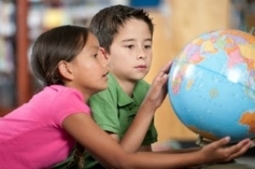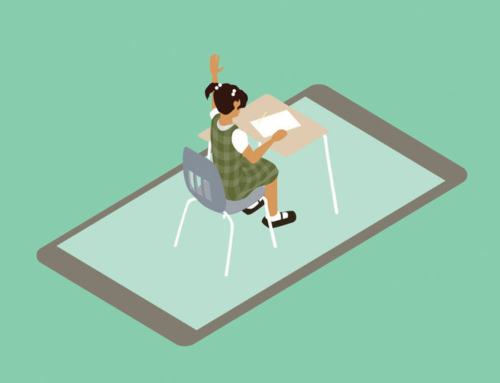In the fall of 1979, Yalda Modabber had just moved from Iran back to her birthplace in Boston. Her timing was bad: Just weeks later later, a group of armed Iranians took more than 60 U.S. citizens hostage at the U.S. Embassy in Iran. As a result, her fellow students bullied her ruthlessly.
Golestan Education’s Yalda Modabber
“It was nonstop for two years,” says Modabber, who has dark curly black hair and a warm smile. “That period in my life was so hard that I blocked it out. I don’t even remember my teachers’ names. The entire class turned on me.”
Modabber is now the principal and founder of Golestan Education, a Persian-language preschool and after-school program in Berkeley, California that collaborates with other local schools on cultural education, where my son will be going to preschool next year. In a quiet voice, she tells me that being bullied drove her to integrate empathy into every level at Golestan.
Various studies show that the more empathy a child displays, the less likely they are to engage in bullying, online and in real life. Empathic children and adolescents are more likely to engage in positive social behaviors, like sharing or helping others. They’re also less likely to be antisocial and exhibit uncontrolled aggressive behaviors. That’s a big reason why educators have been devoting more attention to empathy in recent years, integrating it more deeply into schools and curricula. And as Golestan illustrates, some of these efforts are focusing on early childhood education.
Indeed, research suggests the sooner we learn to empathize, the better off we are in the long run. People exposed to empathy earlier in life have greater and longer-lasting emotional benefits than those exposed to it later, or not at all. One recent study suggests that children who are taught social and emotional skills (as opposed to purely cognitive skills) in preschool and kindergarten have better social skills and fewer behavior problems in both kindergarten and first grade, compared with kids who don’t experience that holistic classroom setting.
Should we teach empathy to even the very youngest students? Can we? The answer to both questions seems to be yes—but it’s not easy.
Born for empathy
Our capacity for feeling empathy starts very early in life. Yes, my toddler pulls our cat’s tail and thinks it’s funny, but I also see his capacity to sense the emotions of others. If I’m having a bad day, he pulls me and his papa in for a group hug with his tiny little arms. And it’s not just toddlers: Infants as young as eight to 14 months old can show precursors to empathy, signs like displaying concern for a parent if they’re hurt or upset. The older we get, the more we can empathize. A recent study from the University of Munich in Germany found that children between the ages of five and seven increasingly anticipate feelings of concern for other people.
Teaching empathy doesn’t just make kids more emotionally and socially competent; it can also help them be more successful and functioning citizens in the future. A recent study from Duke and Penn State followed over 750 people for 20 years and found those who were able to share and help other children in kindergarten were more likely to graduate from high school and have full-time jobs. Students who weren’t as socially competent were more likely to drop out of school, go to juvenile hall, or need government assistance. Empathetic people are also more likely to help those they don’t even know—to pay it forward.
Read the full article at: greatergood.berkeley.edu
What do you think about this idea?






